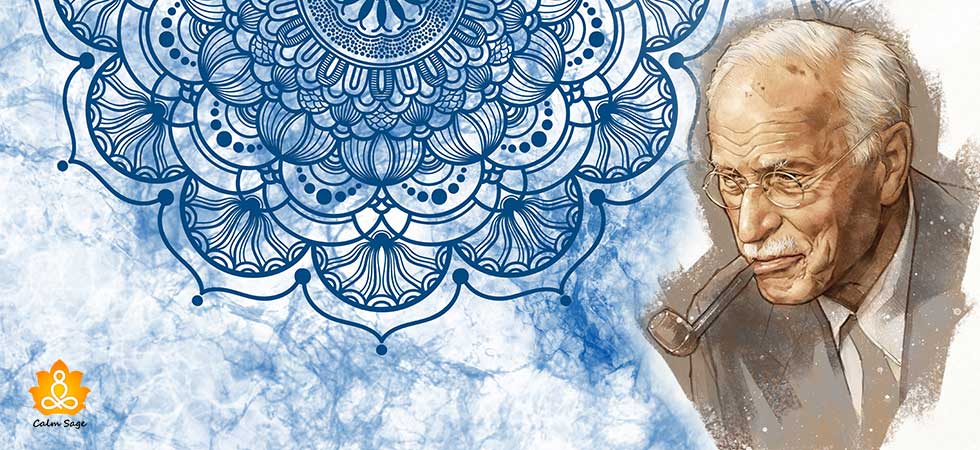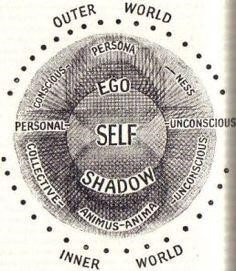Know Yourself Inside Out The Carl Jung Way

Humans as a species is constantly involved in the process of knowing ourselves inside out. I am sure you must have come across various articles, theories and philosophies, suggesting ways to know yourself and your life inside out. Trust me I have been in your shoes!!!
And while I was juggling between these texts I came across the theory of Carl Jung. Reading and implying it on myself really helped me explore WHO I AM (inside out). So here, I am sharing the same with you…
According to Carl Jung, Self can be represented in the form of a Mandala.
Sounds nothing but gibberish, right?
“A mandala is a sacred space, often a circle which reveals inner truth about you and the world around you”
Think of Mandala as a drawing with different components in it, each one representing an aspect that constitutes SELF. He believed his concept of mandala and its role in finding himself so much that he quoted…
“I knew that in finding the mandala as an expression of the self I had attained what was for me the ultimate.”
Disclaimer: This write-up is a creamy layer of what the theory is all about. For in depth knowledge reading relevant books is recommended.
This quote further inspired me to see how Mandala works so, I gave it a shot and as mentioned above it helped me the best. I am sure you must be eager to know how to try it, so let us deconstruct Carl Jung’s Mandala and know yourself inside out…
This is what a typical Carl Jung’s Mandala consists of…
Understanding each component of Carl Jung’s Mandala:
(Suggestion: Grab a pen, paper and start making a note to know yourself)
Outer World: These are your surroundings and environment that you are living in. It consists of consciousness, ego and persona.
Consciousness: The level of consciousness consists of everything that you know directly. This is a part of you since the day you are born, and it continues to grow throughout life.
Example: I know that I love chocolate over vanilla flavored ice cream.
Also Read: How to Find The Purpose in Life
Ego: Don’t confuse it with the slang word ego that we use on a daily basis. For Carl Jung, ego was at the heart of conscious processes. It simply refers to organizing your conscious mind by selecting perceptions, memories, thoughts, and feelings that will be a part of your conscious self.
Make a note of the memories, thoughts, feeling that you can think of right now. This is what your conscious consists of and the things approved by ego.
Example: I remember collecting different leaves and store in my favorite books, but I definitely don’t remember the name of my math teacher.
This sorting of information and memories is done by ego. What ego approves of is consciously available to you.
Persona: We all have different roles to play in our lives. Typically, these roles are defined by two factors…
How we want to be seen by others? and
How do we believe others want us to act?
To simplify it for you think of it as a mask that you wear depending on the situation and people you are with.
Example: I am my chirpy self when with my friends, sincere in front of professors, so on and so forth.
*Identifying your persona gives you the power to control your life behaviors and thoughts in a given setting*
Personal Unconscious: As discussed above ego permits some of the many feelings, thoughts, and perceptions that we experience to be a part of our conscious level. So, what happens to the non-permitted ones? Well, according to Carl Jung it goes to the personal unconscious. They are believed to be displayed in the form of dreams. There is a long list of what it comprises of, deferring from one person to another.
Example: Not remembering how I felt on the first day of my school is a part of my personal unconscious from a long list to choose from.
Collective Unconscious: It is our ability as an individual to see the world in a universally common way and to feel, think, react, to these commonalities and differences in our environment.
Shadow: Jung referred to it as the most powerful and yet the dangerous aspect of the self. It is that part of ourselves that is the most different from our conscious awareness. It consists of animalistic, aggressive, and unacceptable sexual impulses. It is projected onto other people and objects. Don’t think of it as something to be scared or ashamed of. In fact it expressed appropriately it works as a source of inspiration, vitality and creativity.
Example: It might sound embarrassing as it is but a few days back I yelled with my last vocal cord at a close friend of mine.
After which I was taken aback, thinking am I this aggressive in real? (Luckily now I know where it came from)
Animus-Anima: You must be aware of the fact that biologically, males have some hormones that ideally dominate in females and vice-versa. According to Carl Jung, the same applies to the psychology of males and females. Thus he gave the concept of anima and animus.
Anima- It is the feminine side of the male psyche, representing characteristics like- emotionality, feelings, warmth, to name a few.
Example: When I saw my father crying when our last passed away. I never knew My Strong Man is this emotional.
Animus- It is the masculine side of the female psyche, representing characteristics like- rationality, logic, and more.
Example: Few months back me and my friends were travelling by ourselves. It was midnight and we happened to miss our train. But, instead of crying or stressing over, we thought in a logical and rational manner, and boarded a bus instead that was scheduled after 2 hours.
Also Read: Left Brain vs Right Brain: What’s the Difference
Inner World: The inner world has been touched if you have explored the following three aspects of Carl Jung’s mandala viz., Collective unconscious, shadow, animus and anima.
SELF: Self was a central aspect of an individual’s personality and life for Carl Jung’s Mandala. He referred to himself as the energy that provides integration and organization of our personality by bringing together the conscious and unconscious processes. To put it in one word, it is your IDENTITY!
And with this you just explored yourself inside out with the help of Carl Jung’s concept of Mandala.
Wasn’t it a fun and intensive activity?
Taking you beyond books… letting you dig a little deeper… allowing you to explore SELF…
If you enjoyed it, do let us know in the comment section below and don’t forget to share it with your friends and help them know about themselves in a whole different way.
Enjoy knowing yourself and keep smiling 🙂
Related Articles You May Like to Read:
51 Depression And Anxiety Quotes To Cherish Your Mood





















